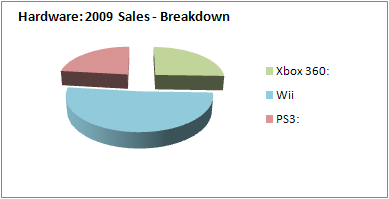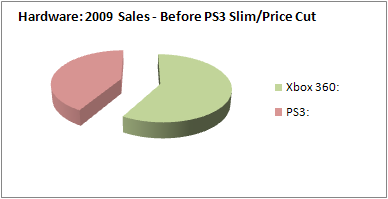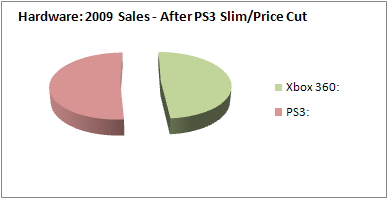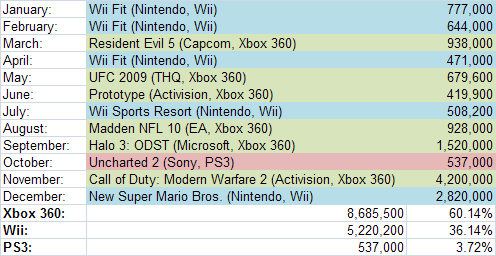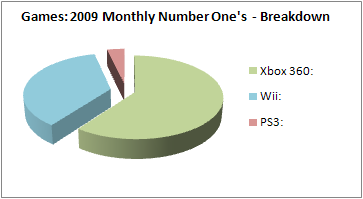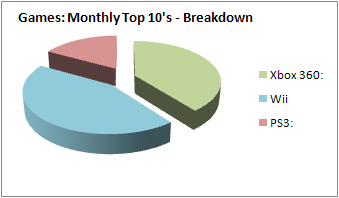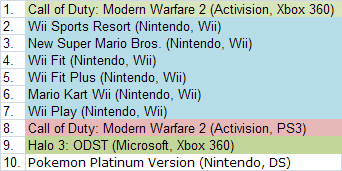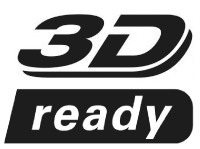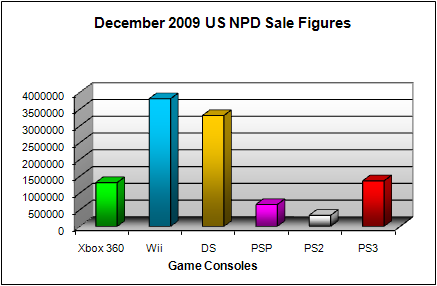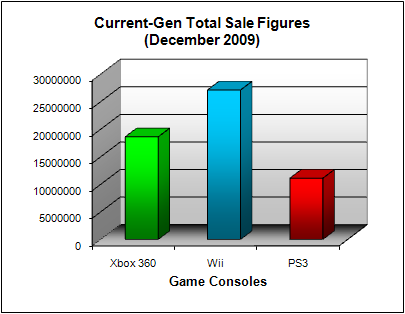It’s been Apple iPad this, Apple iPad that, this week, it seems. For some reason, I keep on referring it as the iTab, what with it being billed as a tablet, although strictly speaking, it’s not a tablet at all. Later on in this WNR, I shall talk about the iPad’s potential as a video player. There were a couple of other major stories as well, so let’s get started.

In Copyright news, the biggest news of the week has to be the new developments in the RIAA vs Jammie Thomas-Rasset case, the one with the infamous $1.92 million damages being awarded to the RIAA. The good news is that the ridiculous $1.92 million has now been reduced. The bad news is that the reduced figure of “only” $54,000 was deemed unacceptable by both sides.
The judge that reduced the damages called the original $1.92 million as unjustifiable for the act of distributing 24 songs. What I thought was important was that the judge acknowledged that the intention was not to distribute, rather, it was to download 24 free songs, valued at less than $24 in today’s prices. The distribution was simply a side-effect of the process. Of course, Thomas-Rasset downloaded (and shared) more than 24 songs, but you have to distinguish her actions from say those that intentionally upload ripped songs to the Internet for the sole purpose of distributing it illegally. I have never understood why the RIAA went to the trouble of making an example of Thomas-Rasset, when there must have been other more suitable candidates, those that are less sympathetic than a struggling single mother, and at least those that had the intention to distribute and perhaps even profit directly from such actions. I guess they wanted to send out a message to downloaders, not uploaders, which perhaps they feel is more responsible for their piracy troubles. But whatever message they wanted to send before, it is not extremely unclear, and a new trial has been requested by the RIAA. Publicity wise, this is a very bad move by the RIAA, as the $54,000 amount was already excessive and the request for a retrial will be seen as more evidence of the music industry’s greed. The ironic thing is that had Ms Rasset simply walked into a store and shoplifted the CDs in question, she would be in much less trouble, and this is when real loss has occurred compared to the act of simply making a copy of something which costs nothing to anyone if the person making the copy never had intentions to pay for anything.
But then again, on their anti-piracy moral crusade, good publicity is not all that important for the likes of the RIAA and MPAA and their members. A blog post by the Geoff Taylor, chief executive of UK version of the RIAA, the BPI, further shows the lack of respect for anyone who isn’t firmly on their side of the piracy debate. Mr Taylor talked about the cost of helping the music industry and dismissed the fact that the government, ISPs and mostly non pirating consumers have to pay for it by suggesting that ISPs simply absorb the cost. Well, since this whole charade is to help out the music industry, you must then ask why can’t the music industry absorb the cost themselves, or even absorb the whole cost of piracy which they’ve been doing this whole time and still managed to earn record profits. The music industry see piracy as everyone else’s problem, even though they’re partially responsible for it by not adapting quickly enough to the digital revolution while holding on hopelessly to their outdated business model. The music and movie industries have been spoiled by the government’s extreme pro copyright views, not just in the UK but all around the world, and they’ve started to believe that its their right to earn a profit, when no other industry gets as much protection. Adapt or die. These industries believe that so much will be lost if they’re left to die, but in reality, studios and labels hamper the creative process and cultural development, as they rip off artists and shape the “products” with only commercial interests in mind. Everyone, from artists to consumers, would be better off with less powerful studios and labels, not more powerful ones as the recent copyright laws makes them.
Still in the UK, the recent mailing campaigns by law firm ACS:Law which I talked about some time ago, has come under fire yet again, but this time from some powerful voices. ACS:Law monitors torrent networks and obtain details of the connecting users and threaten them with lawsuits if they do not pay damages to settle the claims, with most of the money going to the law firm rather than the copyright holders. They appear to deliberately target those vulnerable to a lawsuit or otherwise more willing to pay up, for example those charged with attempting to download pirated porn. It’s can be seen entirely motivated by money, and I suspect ACS:Law and other firms like them are the last ones to wish for an end to piracy. And the worst part is that many of the people they send the notices to, and probably many of those that pay up, are entirely innocent and merely wanted to make the matter go away as quickly as possible (nobody wants to go to court to defend charges against them downloading porn). The problem with their approach is that IP addresses do not tell you the whole picture. It doesn’t even tell you which computer made the connection, it only tells you which ISP account made the connection. And with wireless security being less than what it is in most homes, access hijacking may account for most of the claims of innocence. And a single connection does not piracy make, because unless someone has downloaded 100% of the data in question, they’re just downloading gibberish while sharing chunks of this gibberish with others. Those that have downloaded a massively corrupted ZIP file will attest to just how useful it actually is. But it seems more than just the tech and consumer publications that have noticed the actions of ACS:Law. The very issue was raised in the British Parliament, in the House of Lords, where the actions of ACS:Law were called “legal blackmail” and the whole thing a “scam” – you can see a videos of the Lords speeches here. Harassment, bullying and intrusion were also used to describe the actions of ACS:Law and other similar agencies (and you might as well extend that to the entire music and movie industry as well, when it comes to their copyright crusade).
Moving onto PC gaming piracy. Ubisoft is to introduce a new anti-piracy system where online authentication will be required each and every time you wish to play one of their games. So if you don’t have an Internet connection, you can’t play their upcoming games. The advantages of such a system for gamers is that they no longer need to insert the DVD once the game has been installed, that unlimited number of PCs can be used to play the game, and that save games can be saved online for widespread access. In other words, it’s basically their own version of Steam. Steam itself has been doing very well lately, now having 25 million members and a yearly growth rate that other gaming companies and retailers can only dream of. I like Steam and I suppose Ubisoft’s system does make anti-piracy less of a chore than the horrible StarForce or SecuROM systems, where you have to jump through several hoops, with your hands behind your back, all the while singing the Canadian national anthem, just to be able to play a game. The online save game function, as long as it’s optional, would also be welcomed especially if it comes with time based backups just in case you overwrite a much needed save game. What I don’t like is the online authentication requirement. I understand that it is needed, but surely not every time? Perhaps a system where you only need to check back in every 3 or 5 game sessions would be better, and that would at least allow you to play in the rare event that your Internet connection goes down (in fact, I often resort to gaming when my connection is down and I have nothing better to do). If they’re paranoid, they can request a DVD check during these allowed offline sessions. An even better approach may be to create value added content that is optional but is online only (and therefore, requires authentication), so for those seeking the complete gaming experience, they need to have a legal version. The carrot approach will always be better than the stick approach, especially when the stick can be easily avoided with a “patch”.

Let move on to HD. Well actually, there’s not much in terms of HD, not unless you count the Apple iPad as an HD device, which it really isn’t (and this is why it’s so disappointing). There’s also some 3D news and news about Flash video, which does come in HD, so let’s start with that.
HTML5 is the new version of HTML that adds standardized support for Flash type video, but without the need for the Flash Player. Instead, browsers will support the decoding internally, and HTML5 uses H.264 amongst other formats. I’ve reported here before that many browser makers don’t like this, because H.264 is not a free format and it costs money to include support. Which is why YouTube’s and Vimeo’s HTML5 tests only support the Chrome and Safari browsers at the moment. So a war is brewing, between browser manufacturers that support H.264, and those that prefer Ogg Theora, the open source codec. Both parties want their codecs to be made standard in HTML5, but HTML5 is format neutral at the moment. H.264 is better as there’s more industry support and hardware support, but it also requires licensing fees to be paid which will hurt the open source browsers. Then there is Adobe, whose Flash Player is being left out of HTML5 (and the iPad), and they surely won’t take this lying down.
The format issues aside, video served through HTML5 will have several advantages over Flash video. First of all, you will be able to skip to any part of the video without having to wait for the buffers to catch up. And of course, not needing to install a piece of software just to view videos is always a good things, considering that Flash Player still doesn’t support the 64-bit version of IE. My experience with HTML5 has been patchy so far. Vimeo videos worked great, but YouTube ones where pixelated in Chrome (I didn’t test it under Safari). There’s also no full screen mode at the moment. These are all teething issues that will be resolved sooner rather than later, so it’s not fair to judge HTML5 videos based on these limitations at the moment.
And this is why the Apple iPad doesn’t support Flash either, although it does support HTML 5 and H.264. So is the iPad the device you need to complement your home theater? It’s hard to say, really. The lack of an even 720p resolution screen (which is only 1024×768, which is just short of the 1280×720 required to be classified 720p), no Blu-ray support, and as yet unrevealed specifications in regards to HD H.264 playback makes it far from the perfect media player. There’s also no HDMI, and without an optical drive anyway, there’s no route to Blu-ray playback (which is just about right for an Apple device when it comes to dismissing Blu-ray). There isn’t even an USB connector to connect to an external drive. But the iPad will be able to do many things. I’ve always wanted a device that can browse the net while I watch TV and movies, sometimes because I need to find out a fact or to find out more about a certain topic that’s being shown on TV. And through Apps, you can probably turn the iPad into a giant universal remote control, sort of like an XXL Harmony remote. And through more Apps, turning the iPad into a UPnP server/DLNA compatible device should be possible, and that could be interesting. So should you want the iPad? Probably. But like with the iPhone, you might want to wait for the next generation device, which will probably remove many of the limitations with the current device, like 720p video support for example.
And as for the 3D news, well in the UK, Sky Sports will broadcast the world’s first live football (soccer) match in glorious 3D, well for all the 7 people that actually have the 3D ready TV and glasses to watch it of course. Some nine pubs are being equipped with 3D equipment for the crucial match between the mighty Arsenal and that team from Manchester that Beckham used to play for. And to further make my allegiances clearer, COME ON YOU GUNNERS!!!
Not much happening in gaming at the moment, although I suppose I should bring the 2009 game of the year poll to a close soon. I think Modern Warfare 2 is the winner, although Assassin’s Creed 2 came close, and there was a good showing for Uncharted 2 in third place.
See you next week.








